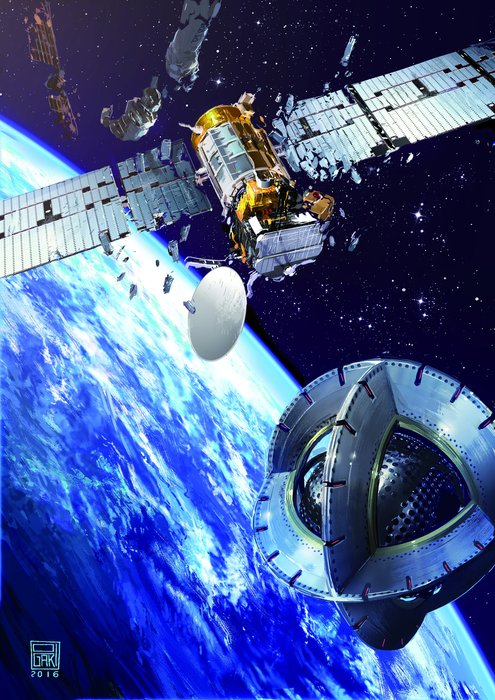The space tug that could end the massive debris problem
A space tug using magnetic forces could grapple and remove derelict satellites in a move to combat space debris. But the same strategy could also be used to keep satellites in close formations.
As space debris is a massive problem and could have devastating consequences, scientists are trying to find new ways to deal with the situation. Plucking entire satellites from space is one of the solutions looked at, but such an approach is challenging as it’s difficult to grapple and secure such uncontrolled, rapidly tumbling objects, typically of several tonnes. While scientists are investigating multiple techniques, including robotic arms, nets, and harpoons, the answer could be a magnetic force.
The man behind the idea is researcher Emilien Fabacher of the Institut Supérieur de l’Aéronautique et de l’Espace, part of the University of Toulouse in France, according to ESA.
“With a satellite you want to deorbit, it’s much better if you can stay at a safe distance, without needing to come into direct contact and risking damage to both chaser and target satellites. So the idea I’m investigating is to apply magnetic forces either to attract or repel the target satellite, to shift its orbit or deorbit it entirely,” Emilien explains.

One advantage is that the target satellites already have ‘magnetorquers’: reliable electromagnets carried to adjust orientation using Earth’s magnetic field.
Emilien recalls that the concept originally came out of discussion with ESA experts, and he was lucky enough to be in the right place at the right time to explore its feasibility.
“The first surprise was that it was indeed possible, theoretically – initially we couldn’t be sure, but it turns out that the physics works fine,” the French scientist says.
One ESA expert also commented saying the technique could also keep multiple satellites flying in precise formation, as this kind of contactless magnetic influence would work from about 10–15 m out, offering positioning precision within 10 cm with attitude precision 1–2º.